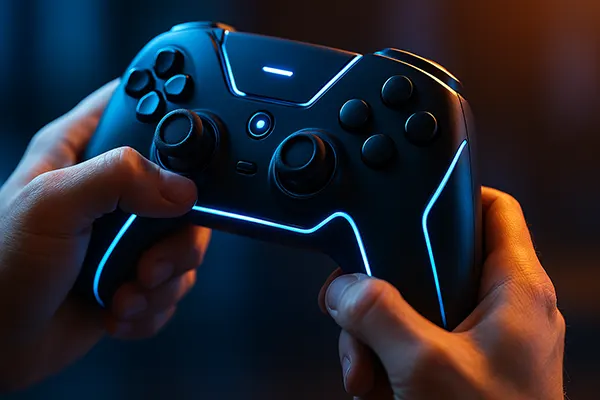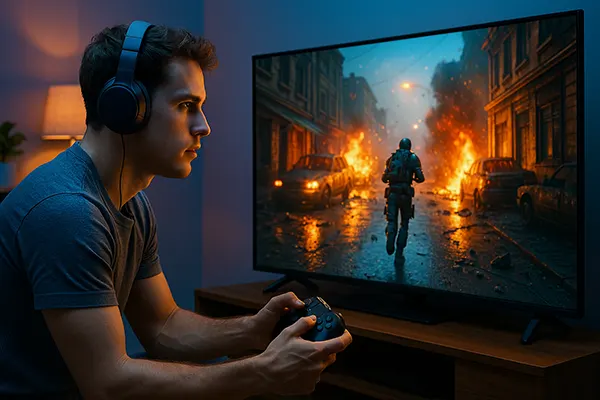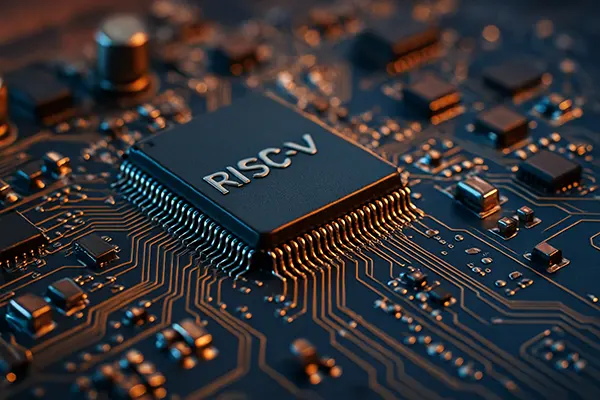AI Gamepads and Controllers: How Artificial Intelligence Is Transforming Gaming in 2025

Artificial intelligence is no longer just behind the scenes in gaming – it is now built into the very tools gamers hold in their hands. In 2025, AI-powered gamepads and controllers are reshaping how players interact with virtual worlds, offering unprecedented levels of personalisation, automation, and immersion. This technological leap is fundamentally changing expectations around gameplay and control, and the innovations emerging today signal a major shift in the gaming experience of tomorrow.
Intelligent Control: From Passive Input to Adaptive Companions
Traditionally, game controllers served a single function: translating the player’s physical input into in-game action. But in 2025, the rise of AI-enabled peripherals means controllers are no longer passive instruments. Modern AI gamepads are equipped with sensors and on-board processors that continuously analyse player behaviour and adapt in real-time to suit individual playstyles. These controllers track variables such as grip pressure, reaction speed, and movement tendencies to dynamically adjust sensitivity, button mapping, and even haptic feedback.
This adaptability allows for greater accessibility, particularly for players with disabilities or unique physical requirements. By learning how a user interacts with a game, AI controllers can automatically reconfigure themselves to reduce strain or enhance response. The result is a tailored experience that reduces learning curves and optimises performance, regardless of a player’s skill level or physical condition.
Furthermore, AI systems are beginning to anticipate player actions based on gameplay context and previous patterns. This predictive capacity enables subtle enhancements such as smoother transitions between game modes or contextual vibration that alerts players to hidden threats, offering a richer and more intuitive gaming experience.
Customisation and Player-Centric Design
One of the standout features of AI-powered controllers in 2025 is their deep customisation. Instead of pre-defined profiles, gamers can now rely on the controller’s built-in AI to automatically optimise settings for different games, genres, or even specific in-game missions. These systems learn from thousands of gameplay interactions, using neural network algorithms to create highly personalised presets without requiring manual configuration.
This evolution promotes inclusivity and encourages experimentation. For instance, a controller might suggest switching thumbstick sensitivity for a fast-paced shooter but revert to a slower configuration for a stealth game. This adaptive control scheme empowers gamers to fully immerse themselves in diverse game worlds without navigating complex setup menus.
Additionally, AI controllers integrate biometric sensors that assess player fatigue, heart rate, and emotional responses. Based on this data, they may recommend breaks, adjust game difficulty, or change feedback intensity—enhancing both enjoyment and well-being during extended sessions.
Collaborative AI: Gamepads That Learn and Communicate
2025 marks the transition of gamepads into semi-autonomous devices that actively communicate with both the player and the game system. Advanced controllers are now designed to process contextual in-game information and adjust player inputs accordingly. For example, in racing games, AI controllers can provide auto-corrective feedback during tight turns or drifting sequences, helping players stay competitive without intrusive assistance.
Moreover, these smart controllers can analyse opponent behaviour in competitive multiplayer games and offer tactical suggestions via subtle haptic cues. Rather than simply registering input, the gamepad becomes a collaborative partner—working in harmony with the player to maximise performance. In co-op and team-based games, AI controllers can even synchronise inputs among players to facilitate coordinated attacks or defensive manoeuvres.
Interoperability is also a key advancement. Controllers now communicate with AI-driven consoles, cloud systems, and even VR/AR environments. This creates a seamless, cross-platform experience where a single device can adapt to various gaming ecosystems without requiring physical adjustments or software downloads.
Voice Interaction and Conversational AI
AI gamepads in 2025 are no longer restricted to buttons and sticks—they now include voice interfaces powered by conversational AI. Players can execute complex commands, switch weapon loadouts, or access maps using natural speech, greatly enhancing the flow of gameplay. This hands-free control is especially useful in fast-paced or VR games, where navigating traditional UI can break immersion.
Unlike basic voice recognition from previous years, modern AI systems understand context, nuance, and even emotion. This means players can phrase commands casually, and the controller will still interpret intent correctly. The conversational model also offers real-time game hints, strategy suggestions, and post-match feedback, all tailored to the player’s current game and skill level.
This breakthrough contributes to more engaging solo play and better coaching in competitive settings. As players talk to their controllers, the devices “listen” and respond in ways that resemble human co-pilots, creating a dynamic and interactive relationship with the technology.

Security, Data Privacy, and the Future of AI Controllers
As AI controllers become more personalised and sophisticated, questions about data security and user privacy grow increasingly important. In 2025, major manufacturers have responded by embedding encryption and user-consent systems directly into the firmware of their devices. Data collected—ranging from biometric information to behavioural profiles—is typically processed locally or anonymised before being transmitted to game systems or cloud services.
Regulatory compliance has become a major focus, particularly in Europe and North America, where new frameworks such as the Digital Device Trust Act (DDTA) require transparency around data handling. AI gamepad developers now publish detailed reports on data usage and offer granular privacy settings that let users control what is tracked and when.
Security features also extend to parental control and session monitoring. For younger players, AI can detect signs of overexertion or frustration and suggest time-outs. For competitive gaming, advanced firmware logs ensure fair play by identifying tampering or unauthorised modifications. These features underscore the industry’s commitment to responsible gaming while preserving user autonomy.
The Next Generation of AI Gaming Tools
Looking forward, AI controllers are set to become even more deeply integrated into gaming culture. Future innovations may include controllers that adapt their physical shape using soft robotics, or models that adjust tension and resistance dynamically to simulate real-world physics. These advances will blur the line between real and virtual interaction, offering tactile realism never seen before.
We can also expect AI gamepads to integrate with brain-computer interfaces (BCIs), enabling thought-based controls for gamers with limited mobility. Although still in prototype phases, such technologies represent a new frontier for inclusion, accessibility, and precision in gaming.
Ultimately, the AI controller of 2025 is more than a device—it is a smart assistant, a coach, a teammate, and a bridge to more immersive, intuitive play. As innovation continues to accelerate, the relationship between player and controller is transforming from functional to symbiotic, redefining how we play and interact with games at every level.







